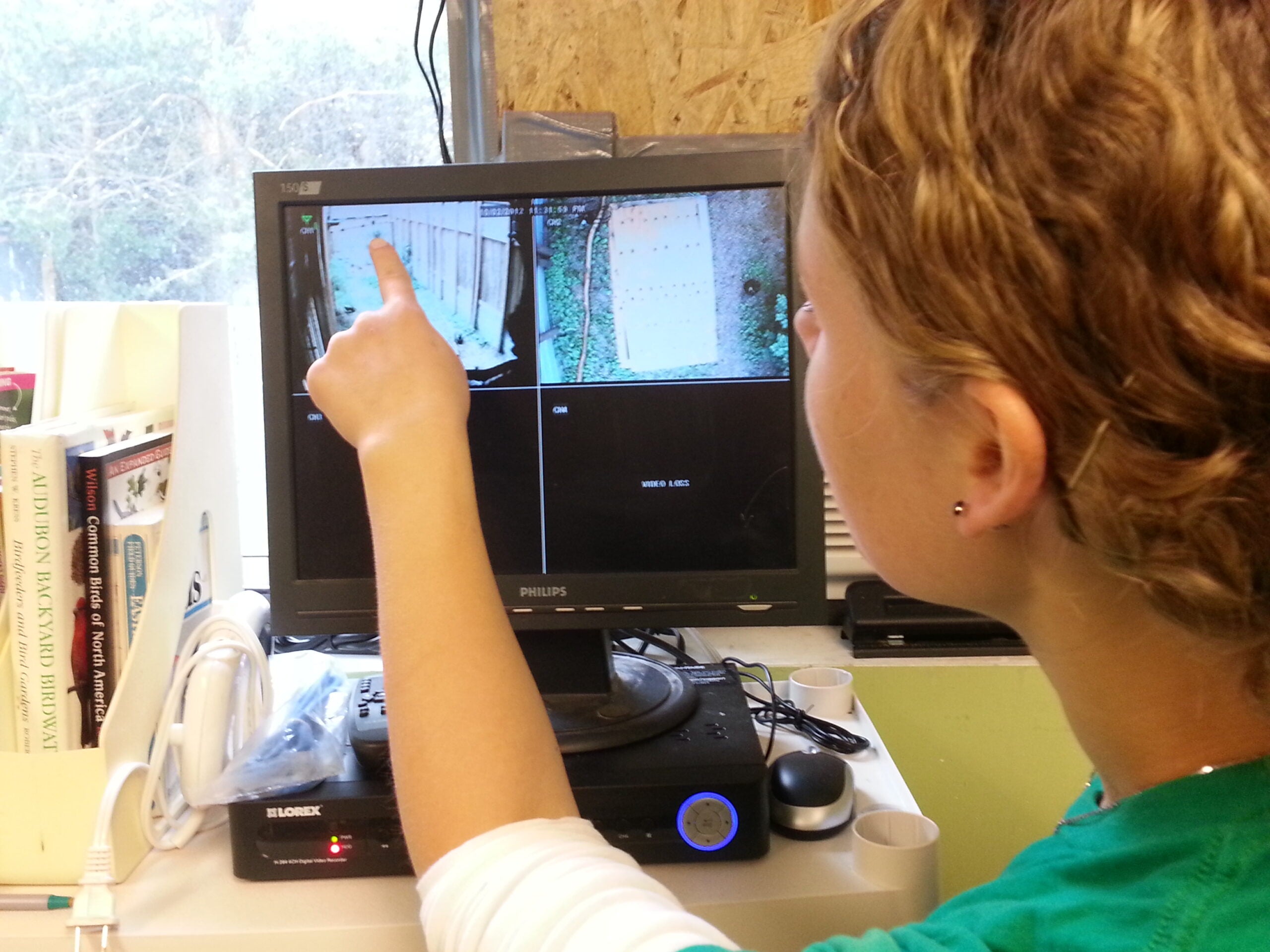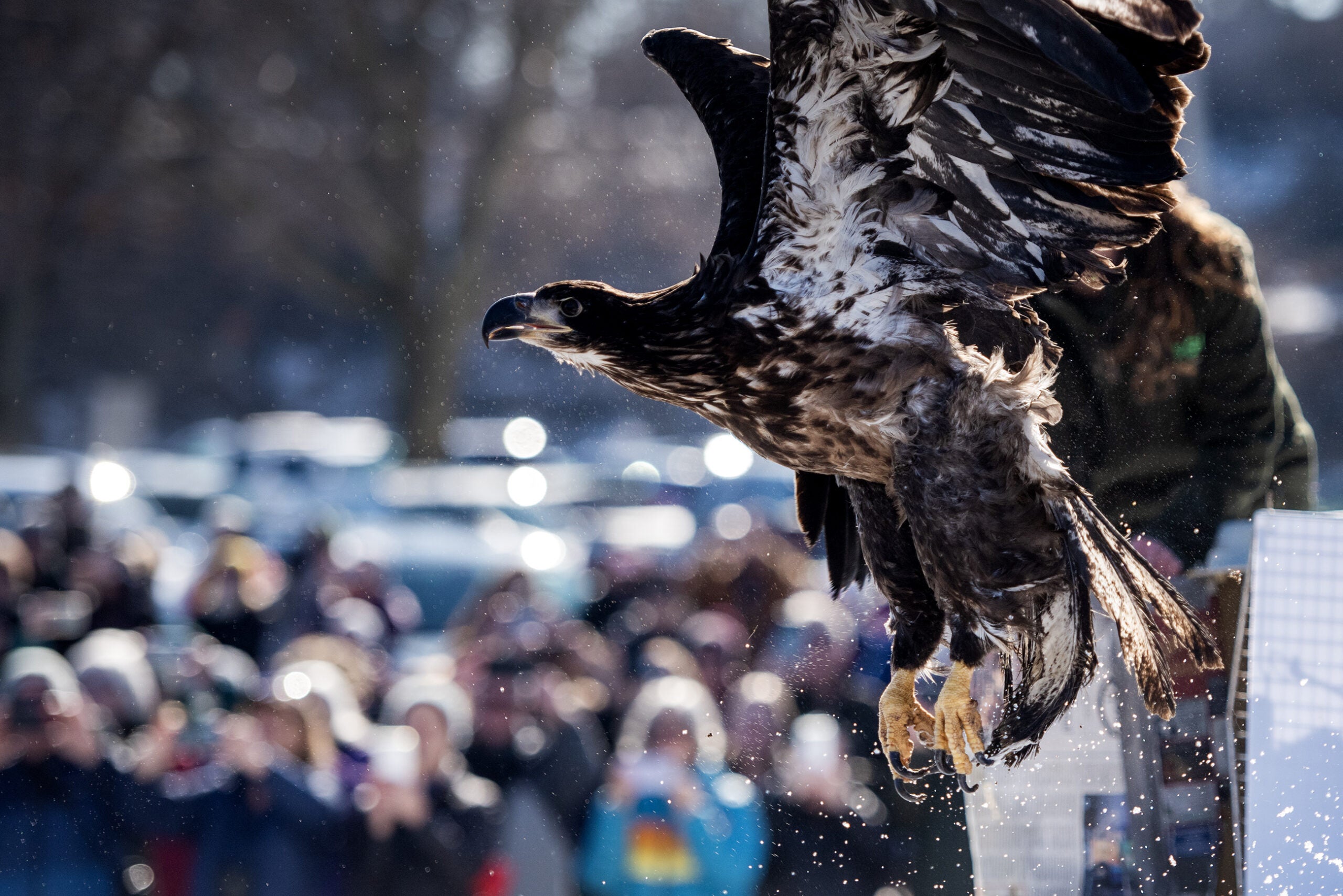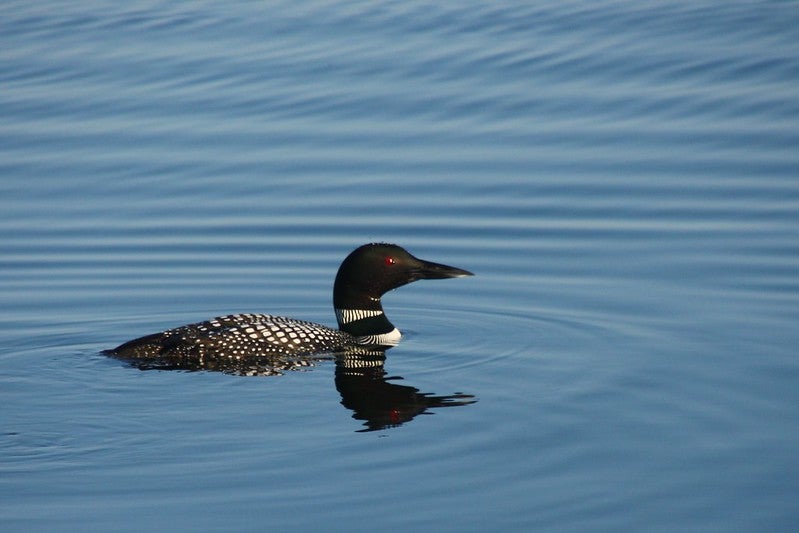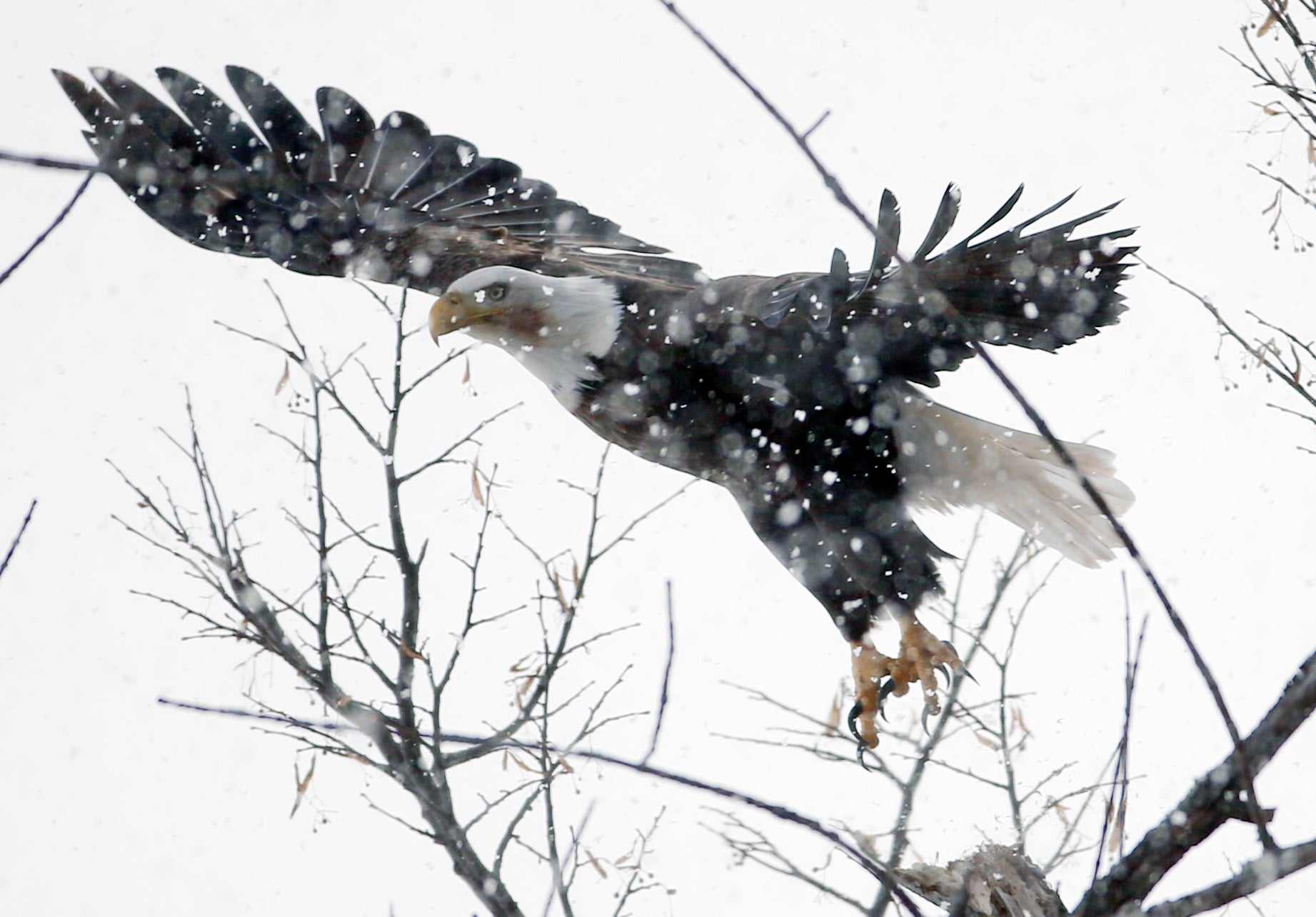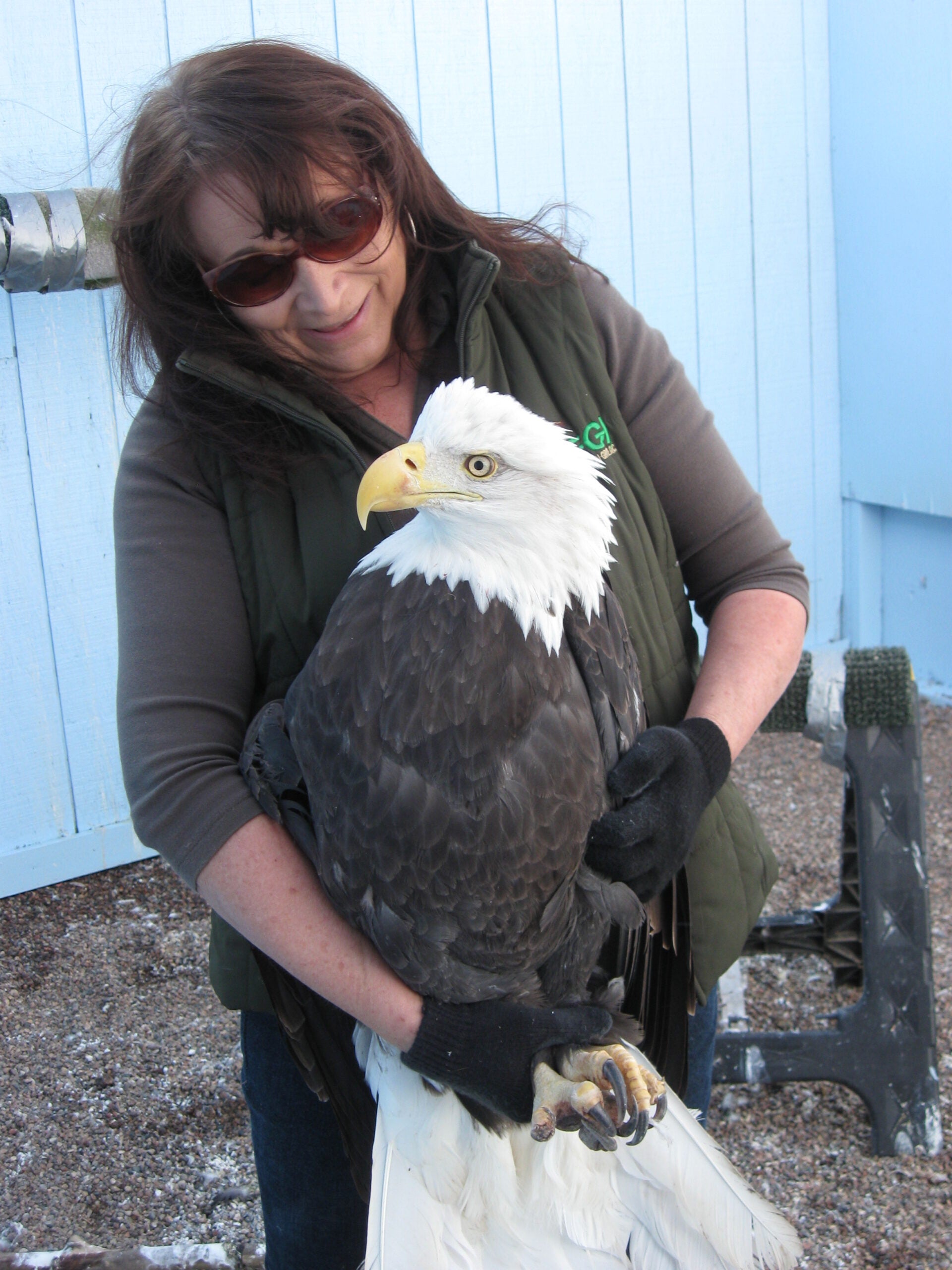The midday sun is what makes it possible for hawks to soar their highest.
This is the story about how the light of the sun makes it possible for injured large birds to fly again at all. At the Four Lakes Wildlife Rehabilitation Center on the south side of Madison, they’ve been nursing injured raptors back to health here since 2004.
Hawks, eagles, and owls are bold and powerful animals in the wild, but when Four Lakes staffers came out to monitor their rehab progress in the past, they’d come down with a major case of stage fright.
Stay informed on the latest news
Sign up for WPR’s email newsletter.
In the center’s raptor rehab pen – a 50-foot-long wooden structure that kind of looks like an old shed on a farm – reside two red-tailed hawks, and a great horned owl. They behave somewhat differently when anyone approaches.
Jackie Edmunds is the rehab center’s coordinator.
Edmunds: “They’re stressed out whenever anybody comes into the pens. If anybody’s in the pen, we stay together on one side or the other, which is another great reason to have the cameras in because it reduces stress when we don’t have to go in and interact with them. And it’s more natural for them to be out in the wild without human interaction.”
Those cameras have been on the Four Lakes Wildlife Rehab Center’s wish list since the raptor pen was built. The trouble is the pen was built too far away from any power source to make running electricity out to it practical or affordable.
That’s where senior engineering students at the University of Wisconsin-Platteville come in – students taking the renewable-energy design course, like Clinton Dums and Nick Stingl. Their solution was to spend a few weeks this spring building a solar-powered system, which allows discreet cameras in the rehab pen and observation monitors several feet away.
Stingl: “It’s a challenging project. We get to apply a lot of different things we’ve been learning over the last few years on it. So that’s why we chose this project.”
The structural integrity of the pen is also a challenge.
Dums: “We’re going to have to reinforce a couple of the beams and cross joints just to make sure that everything is satisfactory.”
The result is a much better way to make sure sick and injured raptors are ready to be released.
Edmunds: “So there are four different video spots on here. We can change the spots at different angles.”
Monitoring the birds on camera gives a better sense of how prepared they are for release.
Edmunds: “This has been an incredible project. We’re kind of hoping we can also use this in the future so that the public can share and enjoy this, too…It’s kind of cool to be able to see raptors in a flight pen, and see what they do in the wild, and how long it takes them to heal, and what it takes.”
Wisconsin Public Radio, © Copyright 2024, Board of Regents of the University of Wisconsin System and Wisconsin Educational Communications Board.

